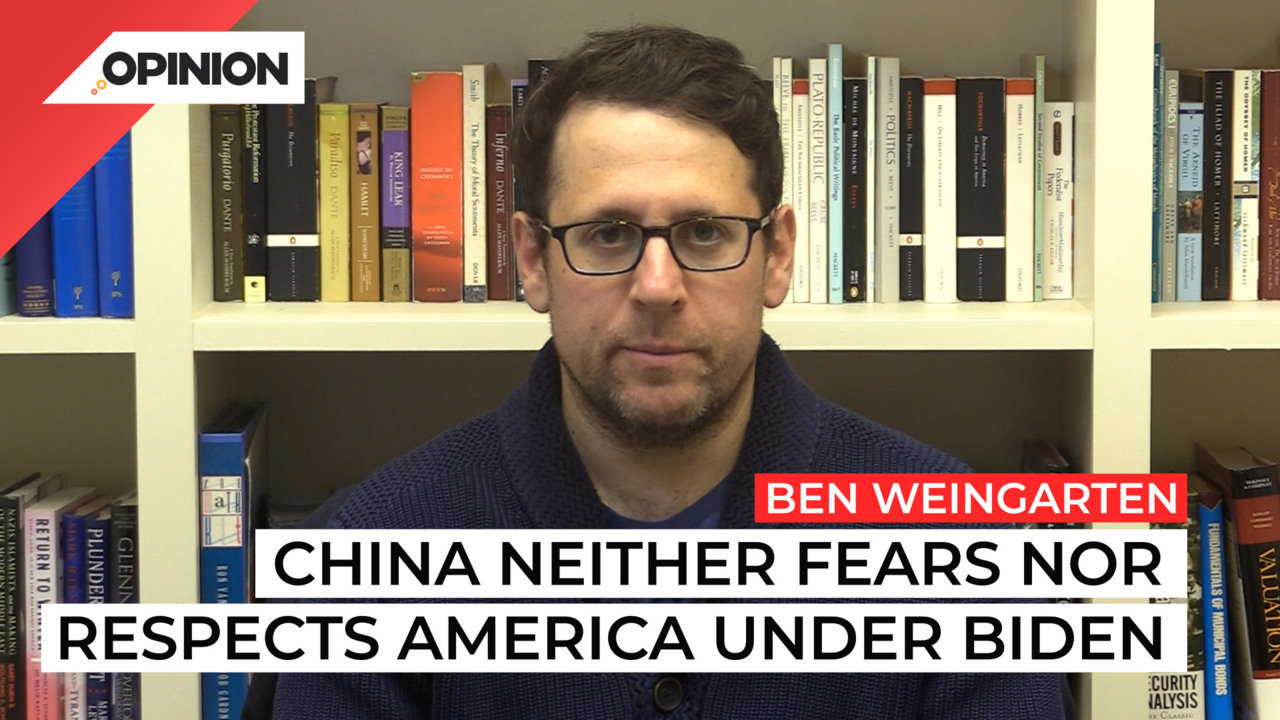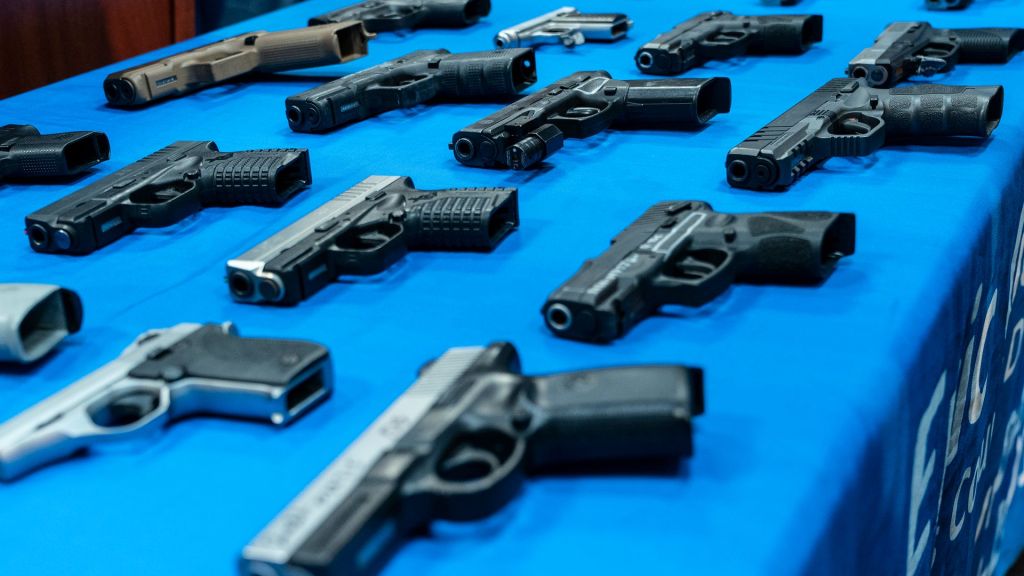
Commentary
-
Our commentary partners will help you reach your own conclusions on complex topics.
China neither fears nor respects America under a compromised Joe Biden. So no one should have been surprised when Beijing brazenly breached our airspace, sending a spy balloon capable of delivering an EMP or hypersonic missile soaring over our most sensitive sites on the eve of a high profile U.S.-China meeting.
This was a power play. But it also likely aimed to test our reflexes and resolve. Nor should anyone have been surprised that a Biden administration that has repeatedly kowtowed to China failed this test. Still, baffling aspects of Biden’s feckless response raise questions maybe more troubling than whatever China might have gleaned from the balloon, and about our defensive capabilities.
Among them, would the Biden administration have ever shot down the spy balloon had civilians not seen it?
Per Bloomberg, Biden administration officials were aware the Chinese balloon had entered U.S. airspace several days before the public, but were intent on “keeping it on the down-low” with the Blinken-Xi Jinping pow-wow at stake.
Officials were reportedly concerned about “a heated political environment ahead of 2024 elections, with Republicans agitating on which party could strike a harder or tougher line on China.” So Team Biden kept the breach of our sovereignty hush-hush for political reasons.
OFF-CAMERA NARRATOR: Well, hello everbody. I am sitting in my driveway in Billings, Montana and right there is a ground-stop on our airport and this thing is up in the sky.
Only when those pesky Montanans identified the balloon was the administration forced to respond.
The Pentagon reassured us the balloon didn’t pose a threat, and was of “limited additive value from an intelligence collection perspective.”
So this was no big deal – and balloons breached our airspace under Trump too, we were told. Only after the balloon was shot down, did Biden say he always wanted to shoot it down.
But that Biden did not strike the spy balloon the second it entered our airspace; that initial reporting on White House deliberations emphasized its political focus; and that the administration downplayed the danger of the balloon and cast its incursion as commonplace, call into question his candor.
Second question: Why did Biden let the balloon traverse the entire U.S.?
The rationale for not shooting down the balloon after it entered our airspace was one of fear that those on the ground could be harmed. But this is dumbfounding when you consider the argument was made when it was known the balloon was traveling over the third most sparsely-populated state by density in the country. Do we really lack the capability to safely pop a balloon over a state with fewer than 8 people per square mile? Instead, the Biden administration let the vehicle surveil the country unimpeded.
That it was shot down, sending its pieces flying, only after emerging over the Atlantic Ocean, necessitated a seemingly complex recovery effort on the water’s shifting surface and beneath it. According to the Pentagon, “it’s possible that some debris could escape notice and wash ashore.”
Another question: Is the related claim there was a national security benefit to letting the balloon fly legitimate?
Two days after the balloon was shot down, NORAD’s Commander claimed letting the balloon fly gave intelligence officials “the opportunity to assess what they were actually doing, what kind of capabilities existed on the balloon, what kind of transmission capabilities existed.” But did the benefits outweigh the costs? Couldn’t officials have assessed the balloon’s capabilities and then promptly shot it down, rather than risk potential compromise of our military sites? Is this just rationalization after the fact?
Did American forces really fail to detect previous balloon breaches?
If so – as has been claimed – that calls into question the entire integrity of our air defenses. If not, and top administration officials during the Trump years were kept in the dark about balloon violations of our sovereignty – for any reason – those officials having been totally blindsided by such claims, this would constitute unconscionable insubordination.
Lastly, what role did Gen. Milley play in all this?
The Chairman of the Joint Chiefs of Staff reportedly advised President Biden not to shoot down the spy balloon as it floated over America.
His position is worthy of scrutiny given what we know about his posture towards China. Remember, in the waning days of the Trump presidency, Gen. Milley told his Chinese counterpart “We are not going to attack or conduct any kinetic operations against you.” He reportedly added, “If we’re going to attack, I’m going to call you ahead of time. It’s not going to be a surprise.”
The general claimed he was seeking to defuse hostilities between the U.S. and China – that intelligence indicated China believed a U.S. attack might be imminent.
Trump said he was totally unaware of these calls, and that if reporting was true, the general should be tried for treason. Gen. Milley in the past has said that China “is not an enemy.”
Congress ought to ask him about his role in spy balloon deliberations, what he might have communicated to his Chinese counterparts, and whether he acted in America’s national interest.
-
Unfair Biden executive order favors Democrats in November
In March 2021, President Biden issued an executive order aimed at expanding voter registration and election information for all eligible Americans. Federal agencies were directed to collaborate with state and local election officials to achieve these goals. However, some GOP lawmakers and conservative critics express concerns that the order could favor left-wing election financing and potentially impact…
-
Governments could be censoring social media content
U.S. policymakers have struggled to agree on the rules of engagement with social media platforms, especially regarding violent, threatening or otherwise dangerous content. In the wake of recent events — namely the COVID-19 pandemic and the Jan. 6, 2021 insurrection, both of which were amplified by online dis- and mis-information — some have also argued…
-
Action required to combat anti-Jewish sentiment at elite schools
On Tuesday, April 30, student protesters took over a building on Columbia University’s main campus and demanded that the university divest from Israel, which the university has so far refused to do. This occupation at Columbia follows months of similar protests by pro-Palestinian demonstrators around the country. The occupied building, Hamilton Hall, holds a significant…
-
Biden greenlit Iranian strike on Israel
The past 30 days have witnessed tense exchanges of airstrikes between Israel and Iran, beginning with Israel’s alleged bombing of the Iranian consulate in Damascus on April 1. Iran retaliated in a widely telegraphed response designed to minimize human casualties and to provide room for de-escalation. Israel responded similarly with an even smaller second strike,…
-
Why misguided Biden is siding with Iran over Israel
The situation in the Middle East is becoming more complex, and President Biden faces a delicate situation as he seeks to prevent a broader conflict in the region. Following Iran’s unprecedented airstrikes on Israel, prompted by Israel’s alleged destruction of Iran’s consulate in Damascus, Biden asserts that he’s against participating in Israeli retaliatory strikes on…
Latest Opinions
-
 Reuters
Reuters
Ukraine launches major drone counter-attack on Russian sites
-
 Honda
Honda
Honda will use Formula 1 technology in its upcoming EV lineup
-
 Getty Images
Getty Images
‘Fake eyelashes,’ ‘butch body’: Insults fly in congressional hearing
-
 Straight Arrow News
Straight Arrow News
Billionaires discuss how to shut down Columbia protests in group chat: Report
-
 Getty Images
Getty Images
Congress launches probe of UCLA after violence on campus
Popular Opinions
-
In addition to the facts, we believe it’s vital to hear perspectives from all sides of the political spectrum.


